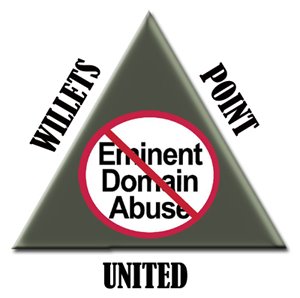The NY Post is editorializing about the city’s effort to
force MSG to move the Garden so a giant refurbishing of Penn Station can be
done-and lurking in the background are the city’s Bobbsey Twins, Steve Ross
(Related) and Steve Roth (Vornado), who want their companies to be able to cash
in on all of this:
“Mayor Bloomberg and City Council Speaker Chris Quinn are no longer pretending: They want Madison Square Garden gone, so they can rebuild Penn Station. But they don’t have the guts to evict the arena the legal way — eminent domain.
“Madison Square Garden will have to move,” Quinn huffed, after the council recently voted for a permit limited to 10 years. The new clarity about ousting the Garden is a step up. For a time, the Bloomberg folks claimed they were OK with fixing up the transit hub and leaving the arena where it is. Now they’re at least being honest about wanting it to move.”
But they do have the guts to evict Nick Sprayregen from his
storage company’s sites in West Harlem and the small property owners from
Willets Point-beating up the little guys is a time honored tradition with the
mayor. No, however, the former community organizer Chris Quinn is fitting
smoothly into the methodology of the rich exploiters. But Jim Dolan is not someone
that can be easily removed so the political class is trying this zoning permit
end run:
“But revoking the Garden’s permit in 2023 is still sneaky. If Bloomberg, Quinn & Co. really seek to give MSG the boot, they should invoke eminent domain.”
The last time Dolan got involved in a political fight-over
the West Side Stadium-the mayor got his ass kicked. And the Post implies that
the little guy may not want a repeat beating:
“We know why: Resorting to eminent domain would make clear this is all about taking private property from its owner. That in turn would likely set off a political firestorm that wouldn’t reflect well on our political class — and might even backfire.
Well, too bad. Abusing a permitting process to squeeze the Garden will only scare off other businesses. Besides, New Yorkers deserve the debate. If our pols want MSG out, let them use the proper tool and make the proper arguments.”
What this would mean is that we would get a public
discussion about the city’s abuse of property rights-and that would be a good
thing, The use of condemnation over at Willets Point has ended up by ceding
other people’s property over to Related and Sterling Equities for a hill of
beans ($1). This is not even close to being a public use. Every property owner
in the city should know that their land is not safe if the Quinnberg regime is
allowed to continue in office.




